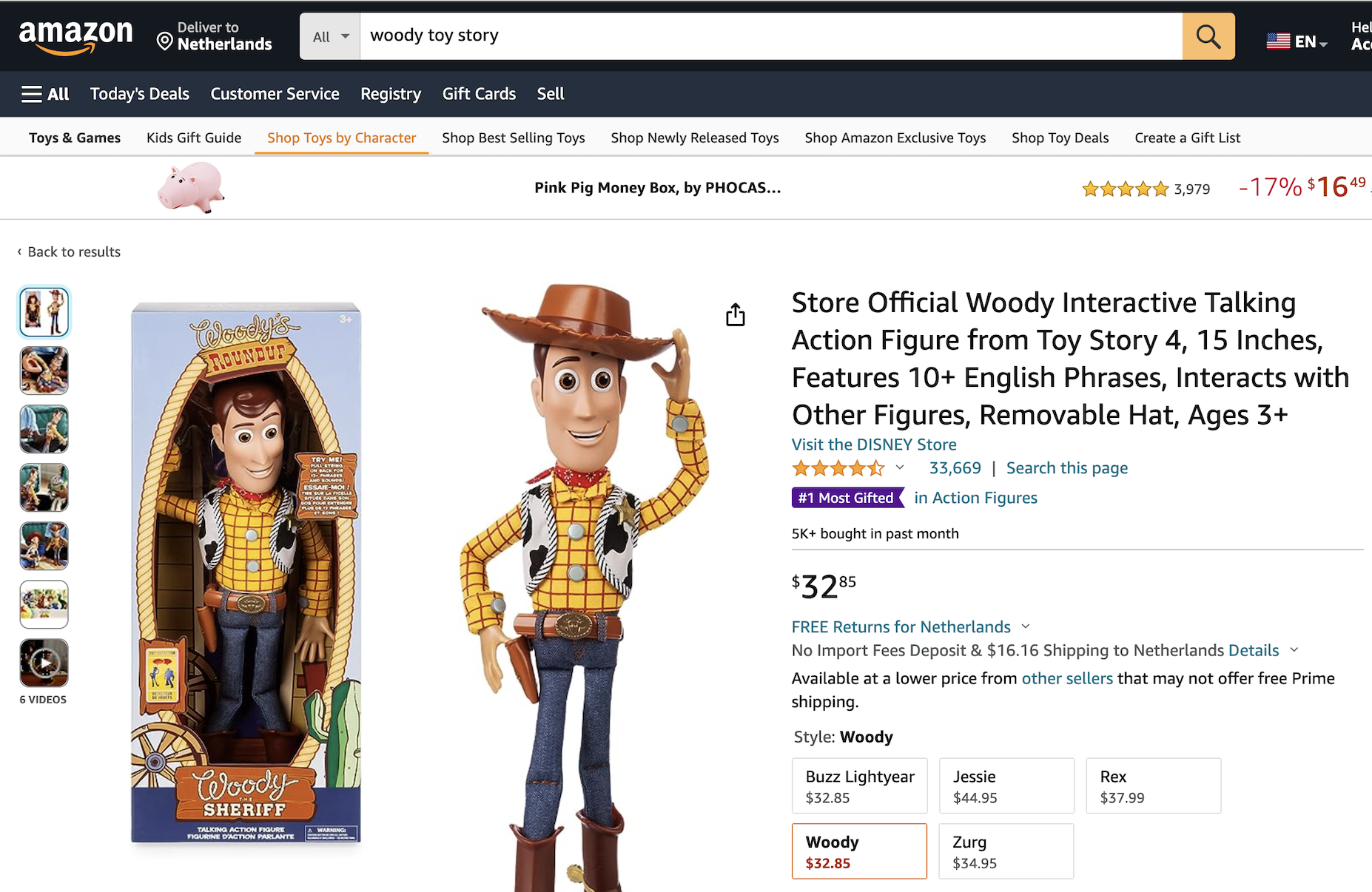
Disney made extensive marketing efforts possible. The Toy Story characters appeared on clothing, and various licensed products, as well as in Disney theme park attractions (Lasseter et al., 2010; Wise, 2014). Nonetheless, the production of toys based on Disney movies posed unforeseen challenges. It is now hard to imagine not having these characters as toys. To this day, the toys remain popular sellers. For example, the Woody doll sells more than 5000 times a month on Amazon (Link to Amazon).

Before its release, Toy Story had extensive promotion and tie-ins, with images even appearing on food packaging. However, when action figures for Buzz Lightyear and Sheriff Woody were introduced, retailers initially ignored them (Pixar Wiki, n.d.). Before the release of Toy Story, a Disney Consumer Products representative viewed a clip of the film, expressing doubts about the marketability of toys based on the characters (Buckley, 2011). Consequently, Disney declined to license the Toy Story characters, leading Pixar to seek partnerships with other toy companies (Buckley, 2011). Despite time constraints and refusal from major toy companies like Mattel and Hasbro, Pixar faced challenges in bringing Woody and Buzz Lightyear dolls to the market within the preferred 18-month timeframe (Buckley, 2011).
Furthermore, Mattel, who owned the license for Barbie, previously declined to incorporate Barbie as a character who would rescue Woody and Buzz near the end of the film (Lasseter et al., 2010). Interestingly, Mattel believed that girls who played with Barbie dolls projected their personalities onto the doll, meaning giving a doll a voice and animating it would impose a personality that may not be in line with every girl's ideal (Lasseter et al., 2010). Despite this initial rejection, Barbie dolls eventually made appearances in the sequels Toy Story 2 and Toy Story 3.
Lasseter persisted in his efforts to transform the characters into physical toys. During a toy fair in New York City, representatives from the Toronto-based toy company Thinkway were shown a clip of Toy Story (Buckley, 2011). Thinkway purchased the license to produce dolls of Woody and Buzz Lightyear (Buckley, 2011). With no other company interested in the opportunity, the small company secured the global licensing rights (Buckley, 2011). This led them to create of toys for what ultimately became the highest-grossing movie of that year.
Albert Chan, owner of Thinkway, initially proposed a line of toys featuring 6-inch (15.2 cm) figures, which was half the size of the GI Joe figures that Lasseter envisioned for Buzz (Lasseter et al., 2010). Despite Chan's assertion that this format was no longer popular, Lasseter persisted, emphasizing the anticipated demand for the characters from the film (Lasseter et al., 2010). Chan returned with figurines measuring 12 inches (30.5 cm) for Buzz and 15 inches (38.1 cm) for Woody (Lasseter et al., 2010).
Upon presenting the toys to the employees, their reaction was almost hysteric (Lasseter et al., 2010). However, major store chains were not as enthusiastic. Walmart opted not to promote the figurines, while Toys "R" Us and the Disney Store placed modest orders of 60,000 Buzz figurines and 45,000 Woody dolls for the United States (Lasseter et al., 2010). Lasseter insisted on producing 250,000 of each figurine covering the expenses himself (Lasseter et al., 2010). Just a week before the film's premiere, it had already sold out, with orders for Buzz figurines reaching 1.6 million within the first week (Lasseter et al., 2010). By 2007, 25 million figurines across all characters had been sold (Lasseter et al., 2010). The overwhelming response took even Pixar's own employees by surprise (Buckley, 2011).